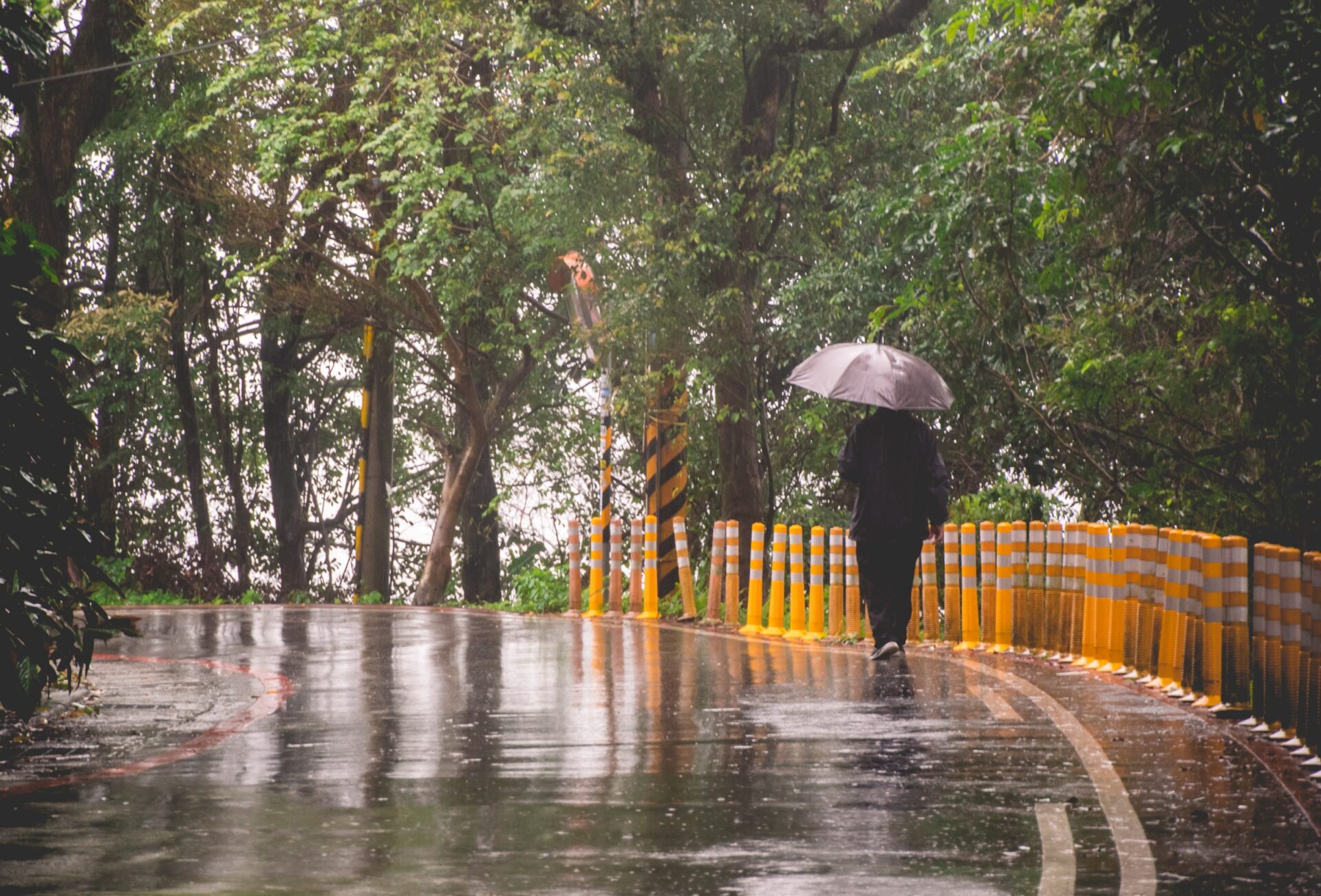Communities across the globe are facing more frequent and more extreme weather events, and Brazil is no different. Whether the issue is flooding or drought, disruptions to infrastructure can impact the water supply. The disappearing Colorado River is just one example of these issues in the United States.
However, engineers in Brazil’s semi-arid northeastern region have developed a low-cost system to help households obtain safe drinking water. The project even won a national award in 2014, but the rain-capture system saw little uptake. Catastrophes like the mudslides that destroyed dozens of homes and washed out sections of highway in the seaside town of São Sebastião, killing dozens and leaving at least another 1700 homeless, may be one of the factors turning the tide for this modest contraption. And another example comes from the other side of the country.
INFRASTRUCTURE CHALLENGES MEAN WATER SHORTAGES
It was raining when Juliana Maria da Silva arose to go to work before dawn on May 28, 2022. It was a Saturday morning, but for Juliana, it was another day of work cleaning homes in Brazil’s northeastern capital, Recife. “It was a day of terror,” Juliana said when we spoke several months later.
The coastal city had been pelted by rain continuously for five days at that point, causing mudslides and flooding in various parts of the metropolis. Juliana made herself coffee as she prepared to head out for her housekeeping job. By 5:30 am, Juliana had put herself together with sandals, a jeans skirt, and a blouse and headed out the door toward the bus stop in the rain. But the bus didn’t come.
In the aftermath of the destruction wrought by the torrential rains, many homes in Jardim Teresópolis had no water supply for weeks but Juliana did thanks to Júlio’s invention.
Juliana has been living with her son, Samuel, and her second husband, Sandro, in a mother-in-law unit behind her mother’s home in Jardim Teresópolis. Juliana brought her son there four years ago after a serious health issue forced her out of her job as a restaurant cashier, and her first marriage broke up. Juliana’s mother, Fátima, has lived in Jardim Teresópolis since she migrated from the semi-arid interior of the state, looking for better opportunities some 30 years ago. These days, Fátima and her three daughters all live on the same street, which lies on one side of a steep ravine with a small stream at the bottom.
For years, though, Fátima and many others in the neighborhood had irregular access to running water.
“The water situation here was really difficult,” Juliana said as she sat in the shade of a breezeway next to her mother’s home. “We would go sometimes 15-20 days without water. We’ve gone more than a month without water.” The local water company regularly rations water in communities like Jardim Teresópolis. Much water is lost to old and unrepaired pipes, but also, the weight of water in the pipes can be too heavy for the ground, depending on conditions, and can lead to collapses, according to one former sanitation engineer.
“What saved us was the church,” Juliana said. A few hundred meters from Fátima and Juliana’s home, an Evangelical church would leave access to its cistern open so that area residents could fill their containers and slog home with water for drinking and cooking.
Juliana, her mother, and sisters are Afro-Brazilian and live in a favela, an informal community built by low-income families who are predominantly of African descent. A few years earlier, the city had built a retaining wall over the crest of the hill near Juliana’s family home. The structure aimed to prevent erosion and mudslides, and local residents also built the road that passes in front of the da Silva home with supplies purchased by the city. Such improvements help prevent catastrophic mudslides that regularly destroy homes and take lives in informal settlements. The construction in Jardim Teresópolis also led Juliana’s family to connect with a university researcher who had a plan for solving water access problems.
FEELING HELPLESS IN THE DEADLY RAIN
Juliana couldn’t know as she left for work that morning that she was in the midst of witnessing 70% of the rainfall expected for the entire month in just two days. More than nine inches of rain deluged the city between 11pm on May 27 and 11am the next day. Coming on top of the previous days of heavy rainfall, the ground was soaked, and a number of low-lying areas were flooded.
After waiting more than half an hour, Juliana realized that she would have to climb the steep hill to the main road that would lead her to the bus terminal. Already, a clay hillside had slid off, obstructing the bus route. And, so, clutching her umbrella, Juliana squelched along the road. The water coursing along would part briefly where she stepped, running under the arch of her foot and into the openings in her sandals.
Around 7am, she finally reached the bus terminal on Recife’s artery, Caxangá Avenue. There, she climbed the steps to the elevated concrete platform roughly two feet above the ground. Shortly after arriving, a section of a hill slid onto the road below, and videos of the disaster began to circulate among the increasingly distressed crowd sheltering at the terminal.
“I felt useless in a way because you can’t do anything to help,” Juliana recalled. “Your opinion isn’t worth anything. Unfortunately, here in Brazil, the opinions of the population don’t mean anything for [those in power].”
Ultimately, after two weeks of intense rain, 129 people died due to the destruction, and more than 125,000 people were displaced from their homes.
There was no way for Juliana to return home. Water was lapping at the platform, and the road home was now blocked by debris, so she called her husband, Sandro, to come get her on his motorcycle.
AN ENGINEER’S QUEST TO CAPTURE RAIN
Júlio César Azevedo always wanted to be a civil engineer. As an adolescent, he tested into one of the most competitive local high schools focused on technical education. And, although he was training in the profession, Júlio wasn’t able to pass the exam to build buildings. So, he studied sanitation.
“I have this attitude, OK, let’s do sanitation. And if it’s sanitation, I have to do it well,” Júlio said as we drove toward Jardim Teresópolis. “It doesn’t matter that it’s not the course of your dreams.”
After graduating, Júlio landed a job with the local water and sewer company, Compesa. During his tenure there, he earned a bachelor’s degree, started a master’s, and became well acquainted with the problems facing communities like Jardim Teresópolis. “The water gets turned on every 15 days — if nothing goes wrong,” he said.
In 2012, as he worked toward a master’s degree in engineering, Júlio presented his advisor with a design for a rain-capture system that would filter out the initial few inches of rain that are contaminated by dirt and debris from a rooftop. The target was the small family farms in the state’s semi-arid inland region, where the dry season means no rain falls for months, and people must rely on cisterns to store their water.
His invention looks something like Pan’s flute: the roof’s drains funnel water toward a plastic tube that fills up a series of tubes, one next to the other, that hold the initial rainfall and keep it from contaminating the home’s cistern.
Instead of seeking a patent on the device, Júlio submitted it to Banco do Brasil for approval as a social-purpose technology, which was granted. According to its website, the government-run bank is the largest financial institution in Latin America and fulfills a public-service role focused on development and social inclusion. The Bank’s certification means anyone can copy the system and use it to collect rainwater. In 2014, the rain-capture system won a national award for its innovation. And in subsequent years, Júlio and his academic advisor launched a social-purpose company, Pluvi, to disseminate the technology.
In 2021, when the community was building a road in front of Fátima and Juliana’s home, a city official suggested that since Juliana’s husband Sandro worked in construction, their home would be a good test case for the rain-capture system.
In the aftermath of the destruction wrought by the torrential rains at the end of May 2022, many homes in Jardim Teresópolis had no water supply for weeks, but Juliana was able to share the water captured and stored by Júlio’s invention with her sisters and another neighbor, thus alleviating some of the stress of the storm’s damage.
Late last year, Júlio traveled to Chile to discuss how the government there might adopt the rain-capture system, and since then, Pluvi told Inkstick it won a citywide call for proposals aimed at reducing the water and energy use in public buildings in Recife. As a result, they have installed the funnel system onto a public health clinic near the university where Pluvi has its offices and onto a publicly-run daycare center.
“In the end, I’d like everyone to have [this system],” Juliana said from the shade of the breezeway. “I’m very grateful to God and to the City of Recife as well, but I wish everyone had the opportunity to have what I’ve been able to do with my home.”




















